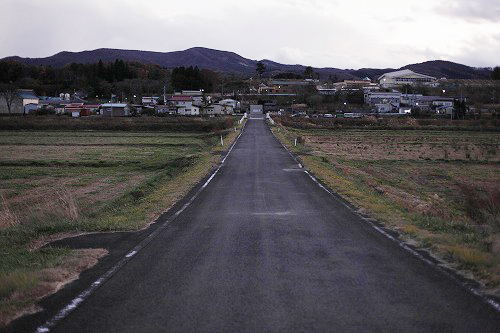Posts Tagged ‘Iwate’
Japan quake tsunami links and notes

New estimates by the US Geological Survey suggest that the earthquake that struck Japan on 2011 March 11 was magnitude 9.0. Grpahic from New Scientist.
The Mainichi Daily News has reported that the strongest recorded earthquake to hit Japan rocked the northeastern coast Friday, triggering a series of tsunami including a 10-meter wall of water that submerged residential areas and farms with muddy streams and washed away scores of people, vehicles, boats and a storage tank on fields and ports in northeastern Japan.
The 10-meter tsunami was observed at Sendai port in Sendai, Miyagi Prefecture at around 3:55 p.m. after the quake with a magnitude of 8.8 rocked the region, local police said. A tsunami expert at the government-affiliated Port and Airport Research Institute described the tsunami following the 2:46 p.m. quake as “one of the highest and widest in terms of areas of devastation in the nation’s history.” Shigeo Takahashi, senior researcher at the institute, said, “It’s a tsunami of a once-in-a-century scale.”
The New Scientist noted that the Japanese earthquake has triggered a series of tsunami waves that are now moving east across the Pacific. How will the countries they hit be affected? The shape of each landmass is a major factor determining how the tsunami behaves. Tsunamis are most dangerous when they run over a large area of shallow water. This causes the first wavefront to slow down, so successive waves pile up to form one tremendous wave.
As a result small Pacific islands, especially ones that lie in otherwise deep water, should be largely unaffected. Wave height here might reach 30 centimetres at most. “A little atoll presents a pencil in the water, and the wave just goes right past,” says Robert Cessaro, a senior geophysicist at the Pacific Tsunami Warning Center (PTWC) in Hawaii. Because most of the islands in the tsunami’s path are fairly small, they should see waves 10 to 30 centimetres high at most.
Magnitude 8.9 Quake Shakes Japan, Tsunami Hits Northeast Coast
 A message from the Asahi Shimbun: Editor’s note: We will update our earthquake news as frequently as possible on AJW’s Facebook page. Please check to keep informed on what’s happening. / Toshio Jo, managing editor at International Division, The Asahi Shimbun.
A message from the Asahi Shimbun: Editor’s note: We will update our earthquake news as frequently as possible on AJW’s Facebook page. Please check to keep informed on what’s happening. / Toshio Jo, managing editor at International Division, The Asahi Shimbun.

Smoke rises from a building near Tokyo Bay in this photo taken from the waterfront district of Tokyo's Chuo Ward on Friday. (Mitsuyoshi Amata)
Nikkei has reported that a powerful earthquake with a magnitude of 8.9 struck Japan Friday afternoon, causing damage in Tokyo, many reported injuries in the north where the quake was centered and sending a tsunami hurtling toward the country’s northeastern coast.
The quake, originally reported at a magnitude of 7.9 but later upgraded to 8.9 apparently exceeding the 8.9 quake that struck off Chile in February 2010.
Yomiuri Shimbun has coverage of the quake here.
Local television reported smoke rising from a Tokyo port building, and fire in the capital’s waterfront Odaiba district. There were reports of “numerous” injuries in Miyagi Prefecture, in northeastern Japan where the quake was centered, as a tsunami measured at anywhere from one meter to 4.2 meters hit at various places along the coast.
See NHK TV for video and reports here, here and here.
The US Geological Survey page for the quake is here. Key data:
 Location 38.322°N, 142.369°E
Location 38.322°N, 142.369°E
Depth 24.4 km (15.2 miles) set by location program
Region NEAR THE EAST COAST OF HONSHU, JAPAN
Distances 130 km (80 miles) E of Sendai, Honshu, Japan
178 km (110 miles) E of Yamagata, Honshu, Japan
178 km (110 miles) ENE of Fukushima, Honshu, Japan
373 km (231 miles) NE of TOKYO, Japan
A tsunami warning included Japan, Russia, Taiwan, Guam, the Northern Marianas, the Marcus Islands and the Wake Islands, while 15 nations and territories were covered by a tsunami watch.
In Tokyo, hundreds of concerned office workers tried in vain to make calls on jammed cellphone networks, some wearing hard hats and other protective headgear. Many of them streamed out of buildings in the business district, gathering in open areas. The crowd appeared spooked by the sound of glass windows rattling in tall buildings.
 Services on the Tohoku Shinkansen Line, as well as on the Tokaido and Sanyo Shinkansen lines, were suspended. All services on the Tokyo Metro subway systems in the Tokyo metropolitan area were stopped.
Services on the Tohoku Shinkansen Line, as well as on the Tokaido and Sanyo Shinkansen lines, were suspended. All services on the Tokyo Metro subway systems in the Tokyo metropolitan area were stopped.
Aftershocks were continuing, with one hitting magnitude 7.1, according to the U.S. Geological Survey. Tall buildings swayed violently in central Tokyo as the aftershocks hit.
NHK Television reported that water could be seen rising over cars and pouring into warehouses at Onahama port in Fukushima Prefecture; in Iwate Prefecture a building was washed away, with boats and cars swirling around in the rising waters.
| Location | 38.322°N, 142.369°E |
|---|---|
| Depth | 24.4 km (15.2 miles) set by location program |
| Region | NEAR THE EAST COAST OF HONSHU, JAPAN |
| Distances | 130 km (80 miles) E of Sendai, Honshu, Japan 178 km (110 miles) E of Yamagata, Honshu, Japan 178 km (110 miles) ENE of Fukushima, Honshu, Japan 373 km (231 miles) NE of TOKYO, Japan |




